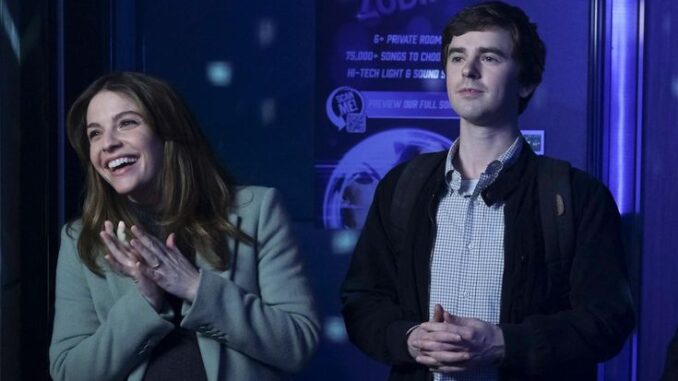
A wedding between two central characters like Shaun Murphy and Lea Dilallo should have been the crown jewel of The Good Doctor’s season finale—a culmination of their years-long journey filled with challenges, growth, and love. Yet what should have been a deeply emotional and resonant moment ended up feeling surprisingly hollow. In its attempt to juggle multiple plotlines—hospital shakeups, underdeveloped character arcs, and fragmented subplots—the finale sacrificed the heart of the story it was trying to tell.
Let’s start with the wedding itself. Shaun and Lea’s relationship has been a slow burn from awkward flirtation to genuine companionship. Fans have followed their highs and lows, from miscommunication to heartbreak, from loss to renewal. Their marriage should have been the emotional payoff—a moment of catharsis not just for them, but for viewers who invested in their journey. But instead of being front and center, their big day was squeezed in between unresolved medical drama, administrative chaos, and loosely tied-up character arcs.

The ceremony was visually lovely, yes—Shaun in his suit, Lea glowing with joy, and familiar faces gathered around—but emotionally, it didn’t land. There wasn’t enough space given to their vows, their fears, or the personal reflections that typically make The Good Doctor so moving. It felt like the writers were in a rush to cross the wedding off a checklist rather than letting it breathe as a true milestone. What could have been one of the show’s most heartfelt episodes became an afterthought overshadowed by noise.
That noise included sudden changes at the hospital, which were introduced so abruptly they felt jarring. New policies, staff changes, and leadership shifts were mentioned in passing or bundled into chaotic scenes that lacked the necessary build-up. For a show that has always grounded its drama in character motivations and ethical dilemmas, the corporate shakeups felt inorganic—more like setup for next season than narrative closure. Viewers were left scratching their heads: What does this mean for Shaun’s future? Who’s in charge now? How do the rest of the doctors feel about these changes? The finale offered no clear answers.
Meanwhile, another subplot that suffered from lack of development was Asher Wolke’s ongoing struggle with familial acceptance. Asher is one of the most unique characters in the ensemble—a former Orthodox Jew turned openly gay surgeon whose background has often been a source of internal conflict. In the finale, the show hinted at progress in his journey toward reconciliation with his estranged family. But those hints were just that—fleeting moments, brief conversations, emotional fragments. There was potential to turn his arc into a compelling, relatable narrative about identity, family, and healing. Instead, his scenes felt like filler—tacked on for diversity’s sake, rather than treated as the emotional anchor they could have been.
